Clean Looks!
Review Summary
The MSI B650M Project Zero motherboard introduces a backplug layout for a tidier build by positioning connectors at the rear, catering to AMD Ryzen 7000/8000 series CPUs. It supports DDR5 memory up to 7600MHz+ (OC), but lacks PCIe Gen 5 connectivity. Key features include robust thermal solutions, comprehensive USB connectivity including a USB 3.2 Gen 2×2 port, and options for 2.5G LAN alongside WiFi 6E. Despite its innovative design and solid performance, its premium price and absence of Gen 5 connectivity may deter some users. With a focus on clean aesthetics and the latest AMD platform support, it’s best suited for enthusiasts willing to pay a premium for cutting-edge design and cable management benefits.
Hours Tested: 17
Overall
-
Design - 8.5/10
8.5/10
-
Features - 9/10
9/10
-
Performance - 9/10
9/10
-
Value - 7/10
7/10
Pros
- Adequate Power Stages
- Adequate VRM Cooling
- 2x Gen-4 M.2 Ports
- 1x PCIe Gen4 Steel Reinforced Slots (x16/x8/x4)
- 1x USB 3.2 Gen2x2 Type-C Port
- Clear CMOS Button
- Flash BIOS Button
- Backplug Design
Cons
- Pricey
- Average Audio Solution
- Limited Platform when using 8000 series CPUs
GIGABYTE was probably the first brand to showcase the concept of a backplug motherboard inside their customized PC Case to house such boards. This concept is now trickling as other vendors are coming out with their branded motherboards featuring all the connectors on the backside. MSI showcased the Project Zero series of motherboards during CES 24 along with the PANO M100R PZ PC case that is customized to house these motherboards.
I am looking at the MSI B650M Project Zero motherboard, a micro-ATX size motherboard featuring an AM5 socket. As expected this motherboard has all the connectors on the backside of the PCB which makes it easier to provide a cleaner build with only graphics card cables to tackle on the front.
The salient features include:
- Supports AMD Ryzen™ 8000 / 7000 Series Desktop CPUs
- Supports DDR5 Memory up to 7600+(OC) MHz
- The thermal solution consists of an extended heatsink design and M.2 Shield Frozr.
- The network options include a 2.5G LAN, AMD Wi-Fi 6E Solution along with a Bluetooth 5.3 connection.
- PCIe Gen 4-based M.2 ports for NVMe SSDs.
- USB 3.2 Gen 2×2 port on the rear panel.
- Audio Boost feature.
Key Takeaways
- The MSI B650M Project Zero features a backplug design for a cable-free front, 2x Gen-4 M.2 ports, a USB 3.2 Gen2x2 Type-C port, and Clear CMOS and Flash BIOS buttons on the rear panel.
- You should buy the MSI B650M Project Zero if you want a backplug motherboard with adequate USB connectivity and top-notch overclocking performance.
- You should not buy the MSI B650M Project Zero if you want Gen-5 connectivity and you’re on a tight budget.
- Why you can trust Tech4Gamers: Our reviews are based on dedicated hands-on testing by our team of experienced hardware experts. Find out more about how we test.
The specifications are:
| CPU Support | AMD Ryzen 7000/8000 |
| Memory Support | 4xDIMM Slots for DDR5 up to 7600MHz+ (OC) |
| PCIe Slots | 1x PCIe Gen4 x16 slot and 1x PCIe 3.0 x1 slot |
| M.2 Ports | 2x M.2 Gen4 Ports, Two Ports are wired with CPU Socket |
| SATA Ports | 6x SATA 6G |
| Audio | RealTek ALC897 Codec |
| Network | 1x 2.5 GbE LAN port and wireless connectivity using WiFi 6E/BT 5.3 |
| USB Ports | Total 16 USB Ports (Front and Rear) including a USB 3.2 Gen2x2 Rear Port and USB 3.2 Gen2 Type-C on the Front |
| Size | 243.84mmx243.84, mATX Form Factor |
Packaging And Unboxing

The motherboard is shipped inside a standard cardboard packing box. MSI has included the following in the box:
- 1x mATX-sized Motherboard
- 2x SATA 6Gbps Cables
- 1x Quick Installation Guide
- 1x European Union Regulatory Notice
- 1x Cable Sticker
- 2x WiFi Antenna
Design

The MSI B650M LGA1718 socket supports AMD Ryzen 7000/8000 series desktop CPUs. Please check the BIOS update needed for the 8000 series CPUs. It has 4x DIMM slots. The motherboard has 6 PCB layers and 2oz Thickened Copper. The on-board display from socket includes HDMI 2.1 capable of 4k@60Hz and a DisplayPort 1.4 capable of 4K@60Hz.
This motherboard does not have any Gen5-based connectivity which would be a big letdown considering the high price tag. There are two PCIe slots, Gen 4 x16 wired to the CPU Socket and G3 x1 wired to the Chipset. This board has 2 M.2 ports which are wired to CPU sockets and are Gen4.
The rest of the connectivity comes from the B650 chipset including 4x SATA 6G ports, audio solution, monitoring and controlling, etc. Let’s start with the power delivery circuit of this motherboard.
Power Delivery To Socket
The MSI B650M PZ uses an AMD LGA1718 socket that has support for Ryzen 7000 and 8000 series of desktop processors. MSI has used two extended VRM heatsink covers along without a heat pipe for maximum heat transfer from the MOSFETs and VRM. The thermal pads are rated for 7W/mK to ensure effective heat transfer.

The extended heatsink has a silver color finish with a subtle MSI and Project Zero branding that looks quite well in person particularly when it bolds with the M.2 Shield Frozr heatsink.
There is a 10+2+1 power stage design on this motherboard. MSI uses MPS2327 Monolithic power stages for the VCore and SOC whereas there is a MPS2323 for Misc. These are 80A-rated power stages and are governed by the MPS2324 PWM controller.
DIMM Slots
MSI has used 4x DDR5 UDIMM slots. MSI has used the SMT welding process to install slots on the PCB for better performance. A total of 192GB capacity is supported along with a support for binary as well as non-binary memory kits. The maximum supported DDR5 frequency is 7600+(OC) MHz.

This motherboard supports Intel XMP 3.0 and AMD EXPO with dual-channel and dual-controller modes. The supported memory is non-ECC and unbuffered. In addition, MSI has provided a handy Memory Boost in UEFI BIOS that enables users to leverage the true performance of their DDR5 kits.
Storage Options

This motherboard has 2x M.2 slots and 4x SATA ports. There is a single large-size heatsink cover over the M.2 slots. The M.2 Shield Frozr has a silver accent as well. It has Project Zero branding. It is not a tool-less design.
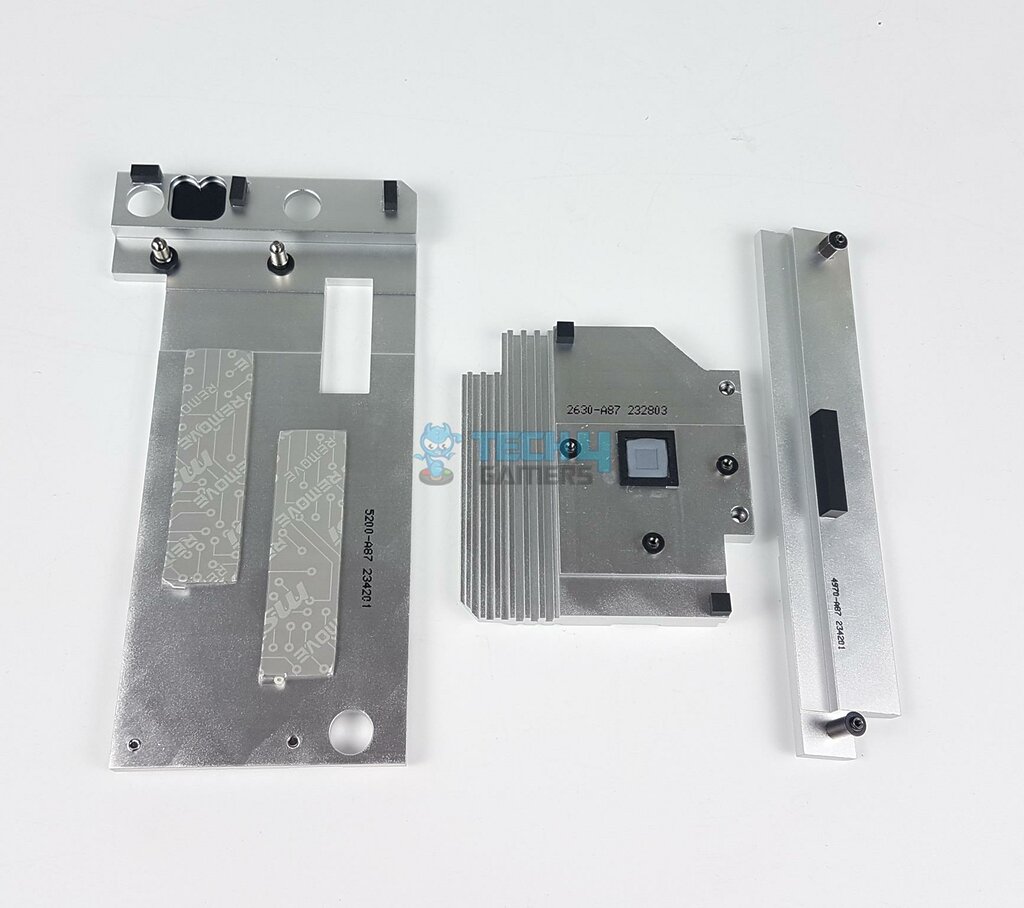
There is no second thermal pad that I have seen on Z790 high-end motherboards from MSI. There is a single thermal pad for each M.2 slot under the heatsink. Both slots are wired to the CPU socket and these are Gen4 (64GB/s).
These slots feature a 2280/2260 form factor. The second M.2 port will operate at X2 if using a Ryzen 8000 series CPU. This motherboard supports RAID 0, RAID 1, and RAID 10 on SATA drives (SATA A3 and A4 only). RAID 0 and RAID 1 are supported on NVMe drives.

Speaking of SATA ports, this motherboard has a total of 4x ports.
PCIe Connectivity
This motherboard has a total of 2x PCIe slots. The top slot is a Gen5 connection and operates at X16 speed. It is wired to the CPU socket. The second slot is Gen3 X1 rated and is wired to the chipset. The top slot supports X8 for 8700G and 8600 G. It will operate at x4 for 8500G.

The top PCIe slot is steel reinforced which MSI refers to as Steel Armor and it has heavy soldered connections on the PCB to support the weight of a heavy graphics card. MSI has used the advanced SMT technology for the PCIE slot to diminish interference and electrical noise.
USB Connectivity
This motherboard is packed with USB ports on the back, rear, and mid-board. It has:
- 2x USB 2.0 (Rear)
- 4x USB 2.0 (Front)
- 2x USB 3.2 Gen1 Type A (Rear)
- 2x USB 3.2 Gen1 Type A (Front)
- 3x USB 3.2 Gen2 Type A (Rear)
- 1x USB 3.2 Gen2 Type C (Rear)
- 1x USB 3.2 Gen2 Type C (Front)
- 1x USB 3.2 Gen2x2 Type C (Rear)
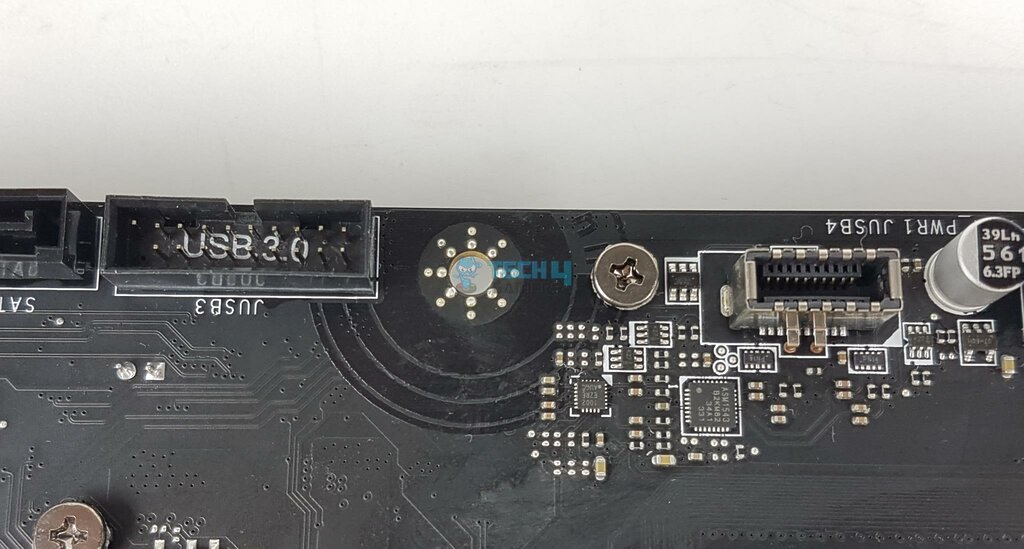
So far, the lack of Gen5 connectivity is a disappointment but glad to see there is a USB 3.2 Gen2x2 Type-C port on the Rear panel and a USB 3.2 Gen2 Type-E port on the front. Some of the hubs and controllers used include ASM1043, ASM1543, ASM1074, PI3DQX, etc.
Networking Solution
This motherboard has a single LAN port rated at 2.5GbE. It is controlled by Realtek RTL8125BG. In addition, there is a WiFi module that comes pre-installed, and dedicated antennas are also in the box. The module is installed in the M.2 Key-E slot on the rear panel and is governed by MediaTek RZ616.

The wireless solution coming from WiFi 6E has high speed, wider channels with improved efficiency compared to the previous generation. This motherboard also supports Bluetooth 5.3 connection. The WiFi supports:
- MU-MIMO TX/RX
- 20MHz, 40MHz, 80MHz bandwidth in 2.4GHz/ 5GHz or 6GHz* bands
- 11 a/ b/ g/ n/ ac/ ax
Audio Solution
Another gripe that I am seeing on this high-priced motherboard is an average audio solution from RealTek ALC897 Codec. There are still Chemi-Con capacitors and this solution is wired to the chipset. As expected there is no DAC or HPA support which is understandable given this level of audio solution.
I am showing the B650 chipset after removing its heatsink cover. Let’s take a look at the connectors.
Internal Connectors
There are:
- 1x 24-Pin ATX Power Connector
- 2x Power Connectors for CPU
- 1x CPU Fan Header
- 1x Pump Fan Header
- 3x System Fan Headers
- 2x Front Panel Header
- 1x Chassis Intrusion Header
- 1x Front Audio Header
- 3x Addressable V2 RGB LED connectors
- 1x TPM pin header (Support TPM 2.0)
- 4x USB 2.0 ports
- 2x USB 3.2 Gen1 Type A ports
- 1x USB 3.2 Gen2 Type C ports
Each fan header is powered and controlled by nuvoTon 3961S. MSI has used the same controller in Z790 Tomahawk Max WiFi and Z790 Carbon Max motherboards. The CPU and Pump headers are rated for 3A whereas the system headers are 2A rated.

There are 4x LEDs to troubleshoot the system in case anything goes haywire. These LEDs correspond to the CPU, RAM, VGA, and Boot. There is also a debug LED on the motherboard. The power connectors use solid pins that improve stability by providing low impedance and durability with high current-withstanding capability.
Rear IO Panel

There are:
- 1x DisplayPort
- 1x 2.5G LAN
- USB 2.0
- USB 3.2 Gen 1 5Gbps (Type-A)
- Wi-Fi / Bluetooth
- Audio connectors
- Flash BIOS Button
- Clear CMOS Button
- 1x HDMI™
- USB 3.2 Gen 2 10Gbps (Type-A)
- USB 3.2 Gen 2 10Gbps (Type-C)
- USB 3.2 Gen 2×2 20Gbps (Type-C)
The Rear IO panel comes with a pre-installed shield in white. The provision of Clear CMOS and Flash BIOS buttons is a welcome addition and makes it convenient for the user to update the BIOS or reset it.

I am showing the backside view of the motherboard. You can see the connectors in black color over here. Each mounting hole has an avoid collision stamp cautioning the user to handle the motherboard with care while installing it inside the PC Case.
BIOS
Overall BIOS interface is same as I have seen on Intel Z790 series of motherboards recently from MSI. I would like to highlight some key features regarding PBO and MSI’s customization when it comes to leveraging true performance from your CPU.
MSI has used Click BIOS 5 for this motherboard and chipset. There is an option labeled Performance Switch that you can use to combine the benefit of AMD’s default PBO settings along with MSI’s customization. Keep in mind that Levels 1 to 3 would depend on your silicon. You can gain performance gain using these levels.
In addition, MSI has also introduced Thermal Profiles listed at 85ᵒC, 75ᵒC, and 65ᵒC. You can simply load either of these profiles and your CPU will be optimized not to cross the set thermal limit. I normally use 85ᵒC on my 7700X which seems to be a golden sample since it can handle -30mV on all cores.
There is another option labeled Config TDP where you can select different listed settings along with Eco mode. Remember Eco mode will put the CPU to 65W power (not PPT). You can use a combination of PPT (Socket Power), TDC, and EDC to your benefit.
Test Build

I have used the following configuration to test the motherboard:
- MSI B650M PZ
- AMD Ryzen 7 7700X [Stock, Auto]
- GIGABYTE GeForce RTX 3060 VISION OC
- Thermalright Frozen Magic Scenic 360 V2 White
- V-Color Manta RGB 32GB DDR5 5600MHz CL26
- WD SN850 500GB NVMe Drive [For OS]
- Sabrent Rocket NANO V2 4TB USB 3.2 Gen2x2 Drive
- Sabrent Rocket 4 Plus 4TB Gen4x4 NVMe SSD [For Games]
- CORSAIR AX1200i Platinum PSU
- MSI MAG PANO M100R PZ Case

The above is a picture showing a run of CPU-Z. We can see that the CPU is reported to be operating at 4476MHz at 105W. This is due to the Windows Balanced Power Profile. The RAM is operating at its tested speed of 5600MT/s after loading the XMP.

You can also see that the graphics card is operating at the x16 link.
We have divided the overall tests into four major categories. These are:
- CPU and Memory Tests
- Storage Tests
- Gaming Tests
- Overall System Tests
Test Result
The testing was done on stock settings with XMP loaded. This motherboard has powers unlocked by default. It is time to take a look at the test results starting with CPU and memory benchmarks.
CPU And Memory Benchmarks
In Cinebench R23.2 the CPU scored 19017 points in CPU Multi Core load and 1968 points in a Single Core Load. The DDR5 kit has performed well at its tested speed of 5600MHz. The single core score of 2177 from Gekbench 5.4.5 is quite well. The performance in 7-Zip benchmark is remarkable as well with a compression result of 93627MIPS and 89049MIPS score in Decompression. The blender benchmark overall score was 286.47 showing the performance potential of this CPU.
Storage Tests
I have used:
- Gen4x4 NVMe Drive
- USB 3.2 Gen2x2 Drive [Rated at 1600MB/s]
Both drives passed their sequential speeds in the CrystalDiskMark. The performance in PCMARK10 Data Drive Benchmark is quite well. The Gen4x4 NVMe drive scored 4858 and the USB drive scored 603 soccer.
Gaming Test
I have used:We have a good all-round performance in the gaming benchmarks. All the games were tested on 1080P using a 144Hz refresh rate. This shows that this motherboard can handle the gaming load easily.
System Performance Test
The PCMARK10 score came to 8913 which is quite impressive and the Performance Test overall score was 9820.
Core Clock Behavior
I have a Balanced Power profile in Windows Environment. To record the idle temperatures, the system was put on idle for 10 minutes. The idle clocks were 3450MHz. The Cores (1 or 2) were boosted to 5.5GHz under 1T load using R23.2 whereas these cores were boosted to 5.175GHz under all cores load. These figures confirm the AMD default performance data for 7700X.
Thermals and Power
I have recorded power draw on idle, under R23.2 multi CPU run, and during gaming at 1080P.
| MSI B650M PZ | |
| System Power Draw – Idle System | 141W |
| System Power Draw – R23.2 CPU Multi | 297W |
| System Power Draw – 1080P Gaming | 377W |
The CPU Package power draw was 145.525W on all cores load using Cinebench R23.2.
Testing was done at an ambient temperature of 18ᵒC. The CPU was idling at 35ᵒC and the graphics card was idling at 28ᵒC. Under load, the CPU was doing 95ᵒC whereas the GPU was doing 66ᵒC using the AIDA64 Stability test with AVX load. Keep in mind that these CPUs will hit the thermal junction under load which is by design.

The VRM/MOSFET was doing 42.9ᵒC at the same ambient. Seems like 7700X is not that taxing compared to 7900 or 7950X.
Should You Buy It
Buy It If
✅You are looking for a backplug motherboard: MSI B650M Project Zero has all connectors on the backside of the PCB. This concept is now booming and we are seeing more options in this category. MSI also carries Intel B760M.
✅You want adequate USB connectivity: This motherboard has USB 3.2 Gen2x2 Type-C and USB 3.2 Gen2 ports that would come in handy for your USB-related high-speed data connectivity.
✅You prefer overclocking: This motherboard uses an extended VRM heatsink with 7W/mK thermal pads for effective heat transfer depending on the SKU you would use with this motherboard. This motherboard has a 10+2+1 power design.
Don’t Buy It If
❌You require Gen-5 connectivity: Skip this motherboard if your requirement includes Gen-5-based PCIe/M.2 connections. This motherboard has Gen-4-based connections.
❌You are a budget user: Coming in at USD 229.99, this motherboard carries a steep price tag in mATX form factor plus it lacks Gen-5 connectivity as well.
Final Words
MSI B650M and B760M are MSI’s first take on the backplug motherboard design. This concept revolves around the fact that all connectors are located on the backside of the motherboard which would provide a cleaner look on the front side and would help a bit in better airflow inside the case since we are talking about going cable-free on the front except the graphics card.
I got the opportunity to test the B650M Project Zero from MSI. This motherboard is in white and silver color accents and has a full cover on the front side with subtle MSI and Project Zero branding that looks quite appealing. This motherboard uses 10+2+1 power stages with an enlarged heatsink design for effective heat transfer though it does not have a connecting heat pipe.
The motherboard uses 7W/mK thermal pads and an MPS2324 PWM controller. It features an LGA1718 socket on the AM5 platform with a B650 chipset, 2x PCIe slots (Gen-4 x16, Gen-3 x1), and two Gen-4 M.2 slots supporting 2280/2260 form factors, all connected to the CPU socket.
Limitations occur with Ryzen 8000 series CPUs, affecting PCIe and M.2 speeds, especially with the 8500G model. It supports up to 192GB RAM at 7600+(OC) MHz, has a steel-reinforced PCIe slot, a large heatsink for M.2 ports, 16 USB ports including USB 3.2 Gen2x2 Type-C, a 2.5GbE LAN port powered by RealTek RTL8125BG, WiFi 6E, Bluetooth 5.3, and basic ALC897 audio with Chemi-Con capacitors. The Rear IO panel includes Clear CMOS and Flash BIOS buttons.
This motherboard retails at USD 299.99 which is a steep price. This price tag is expected due to this new technology that has high production and design costs at this time. I am hoping that pricing will come down once this technology becomes more mainstream and is included in vertical integration industry-wide.
This motherboard has a good all-round performance particularly the VRM temperatures under load. This motherboard has a 3-year warranty from MSI.
Thank you! Please share your positive feedback. 🔋
How could we improve this post? Please Help us. 😔
[Reviews Specialist]
Usman Saleem brings 8+ years of comprehensive PC hardware expertise to the table. His journey in the tech world has involved in-depth tech analysis and insightful PC hardware reviews, perfecting over 6+ years of dedicated work. Usman’s commitment to staying authentic and relevant in the field is underscored by many professional certifications, including a recent one in Google IT Support Specialization.
8+ years of specialized PC hardware coverage
6+ years of in-depth PC hardware analysis and reviews
Lead PC hardware expert across multiple tech journalism platforms
Certified in Google IT Support Specialization
Get In Touch: usman@tech4gamers.com


 Threads
Threads










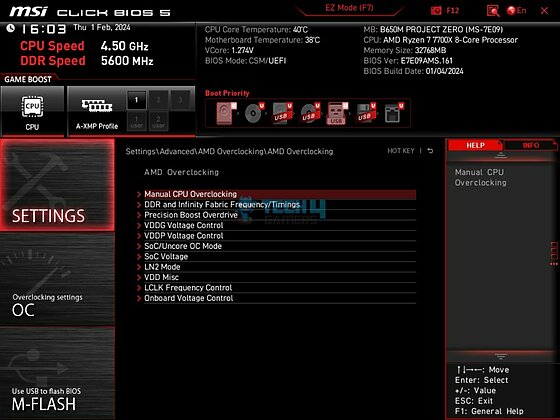






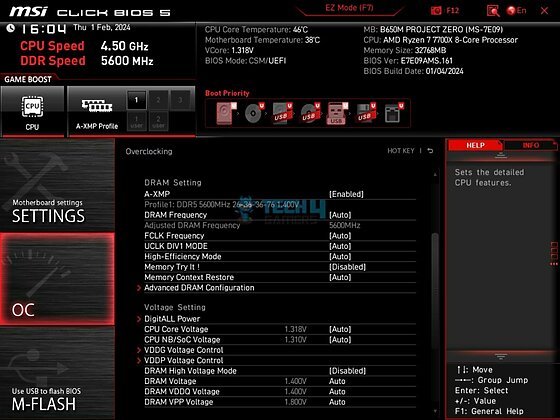

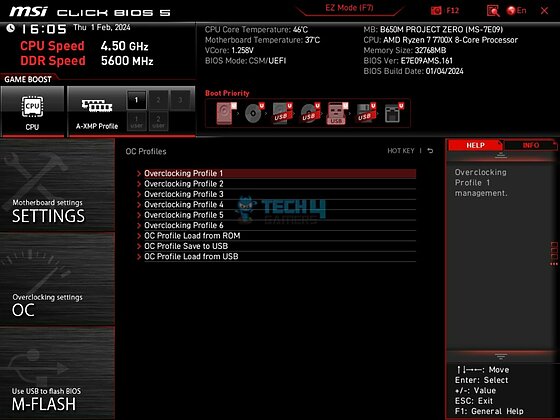


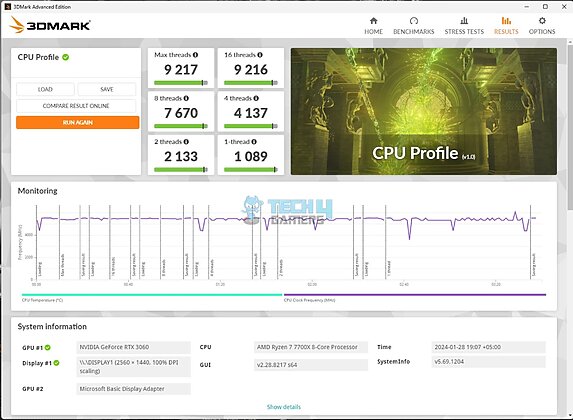


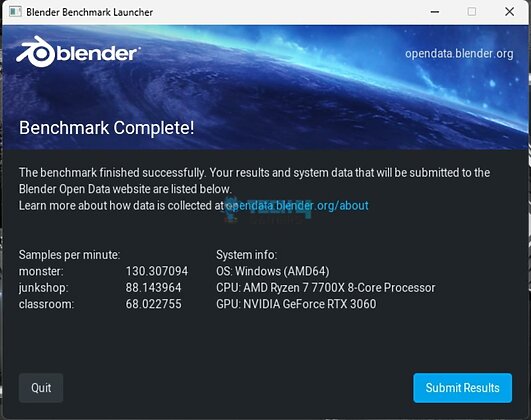








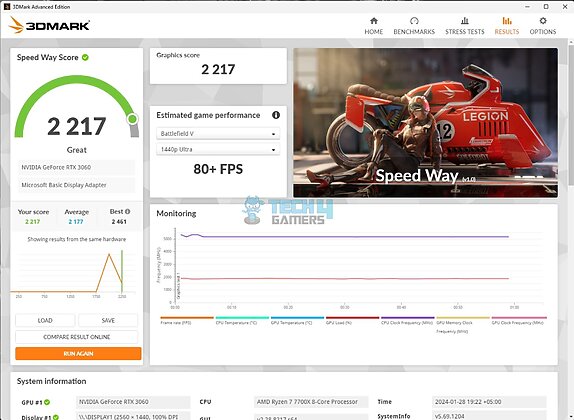









![Best Motherboards For Ryzen 9 7900X [Top-Rated By Experts] Best Motherboard For Ryzen 9 7900X](https://tech4gamers.com/wp-content/uploads/2022/09/Best-Motherboard-For-Ryzen-9-7900X-218x150.jpg)
